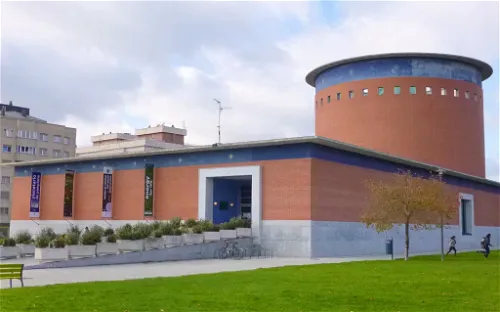Pamplona Planetarium and its collection
The Pamplona Planetarium, inaugurated on November 26, 1993, serves as a cultural center for scientific and technological dissemination. It was established by the Government of Navarra, through the Department of Education and Culture, and co-financed by the Savings Bank of Navarra. The planetarium is managed by the public company Navarra de Infraestructuras de Cultura, Deporte y Ocio S.L.
Location and Architecture
The building of the Pamplona Planetarium, modern in style but with classic resonances and proportions, is well integrated into the Yamaguchi park. This park is one of the numerous gardens in the city and its oriental name and appearance are due to Pamplona's twinning with the Japanese city of Yamaguchi. The park was designed in collaboration with Japanese landscapers as a tribute to the four seasons.
The Dome and Exhibitions
The Pamplona Planetarium boasts a twenty-meter diameter dome, one of the largest in the world, located in the Tornamira room. This room is where scientific dissemination programs are exhibited. The planetarium projects more than 20 different programs each year, all aimed at entertainingly conveying the latest astronomical discoveries.
The Galaxy Garden
Adjacent to the main building of the Pamplona Planetarium, in collaboration with the Pamplona City Council, the Galaxy Garden was built. This garden is a unique scientific and environmental dissemination project in Europe, similar to one that already existed in Hawaii. It features more than 500 shrubs, selected by the Municipal Garden Service of Pamplona, which were sponsored and planted by more than 300 educational entities, collectives, and associations, becoming 'gardeners of the cosmos'.
Science & Technology Astronomy Garden & Park







